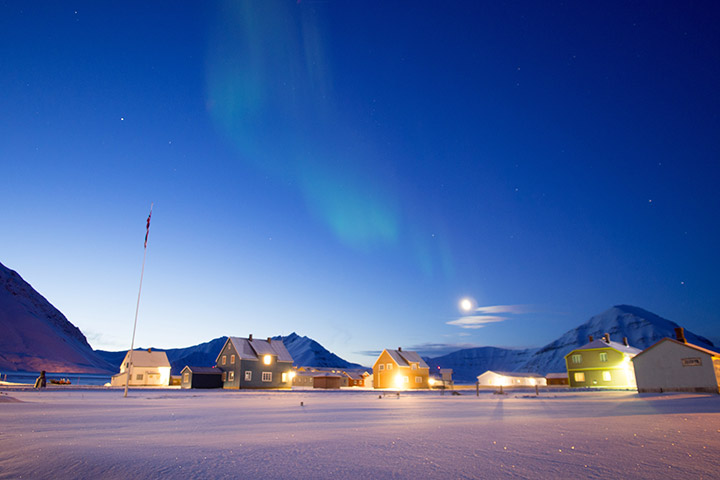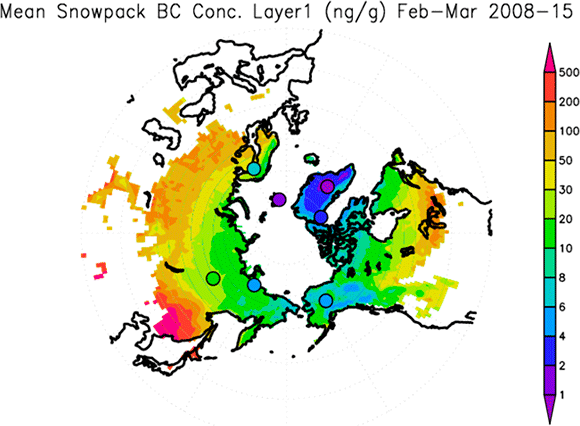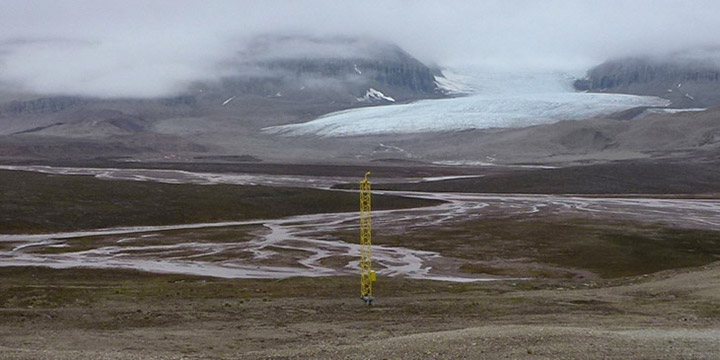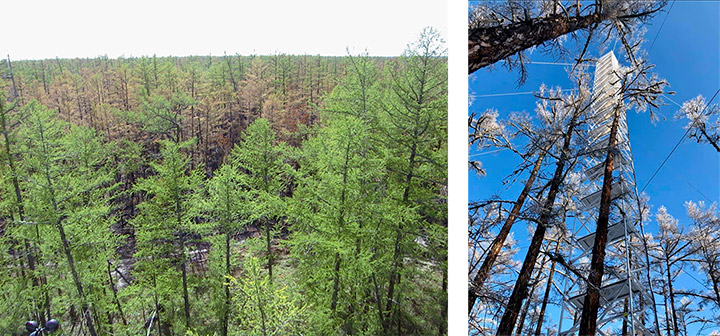Theme 3
Atmospheric climate forcers in the Arctic

Ny-Ålesund at a moonlit night / Photo by Junji Matsushita
This theme focused on climate forces in the atmosphere that play important roles in Arctic warming, especially CH4 (greenhouse gas, GHG) and BC (light-absorbing aerosols), both are known to be short-lived climate forcers (SLCFs). For GHG studies, we took both top-down and bottom-up approaches. We also studied cloud microphysics and ice nucleating particles (INP). By conducting accurate measurements and state of the art numerical model calculations, we contributed to reductions in uncertainties in radiative forcing of these SLCFs as well as effectiveness of mitigation measures.
Study on Arctic BC
We established an Arctic BC COSMOS Measurement Network (ABCM-net) using the COSMOS which we have developed. We also conducted atmospheric BC measurements on the R/V Mirai Arctic cruise and during AWI aircraft experiment. BC concentrations in snowpack were also measured across an extensive area of the Arctic. We found that BC in snowpack reported in previous studies was largely overestimated. By improving numerical models, better estimates in BC radiative forcing were provided.

BC concentrations in snowpack. Circles represent observations and color map shows model calculations (MRI-ESM2) (unit is ng g-1)
Study on Arctic Clouds and INP
We found that INP concentrations in the Arctic increased in summer due to dust from glacial outwash sediments. This high ice nucleating ability was likely due to presences of organic substances. First continuous measurements of cloud microphysical properties in the Arctic were also carried out and their seasonal variations were revealed.

The glacier Brøggerbreen and its surroundings in July 2016 which show the haracteristics of glacial outwash sediments obtained in Svalbard / From News & Topics of the NIPR, Photo by Yutaka Tobo (NIPR)
Greenhouse Gases: Top-down Approach
In the "top-down" studies, sources/sinks as well as processes controlling GHG concentrations were studied from measurements of their atmospheric concentrations at the ground stations, commercial aircraft and R/V Mirai. We evaluated CO2 sources/sinks and importance of biogenic CH4 sources to the CH4 variations.
Greenhouse Gases: Bottom-up Approach
In the "bottom-up" studies, long-term flux measurements of CH4 were carried out at two larch forest in eastern Siberia and a black spruce forest in interior Alaska. We revealed how the ecosystem CH4 budget responds to environmental changes. The observation data were used to adjust environmental parameters for the terrestrial ecosystem models. Investigating the amount of organic carbon contained in the underground ice clarified that the concentrations of CH4 and CO2 present in underground ice bubbles greatly varies among sites.

Right) Photo by Trofim Maximov (The Institute for Biological Problems of Cryolithozone, from the Siberian Branch of the Russian Academy of Sciences)
Research background and overview
Please see here.
Research achievements
Please see here.




